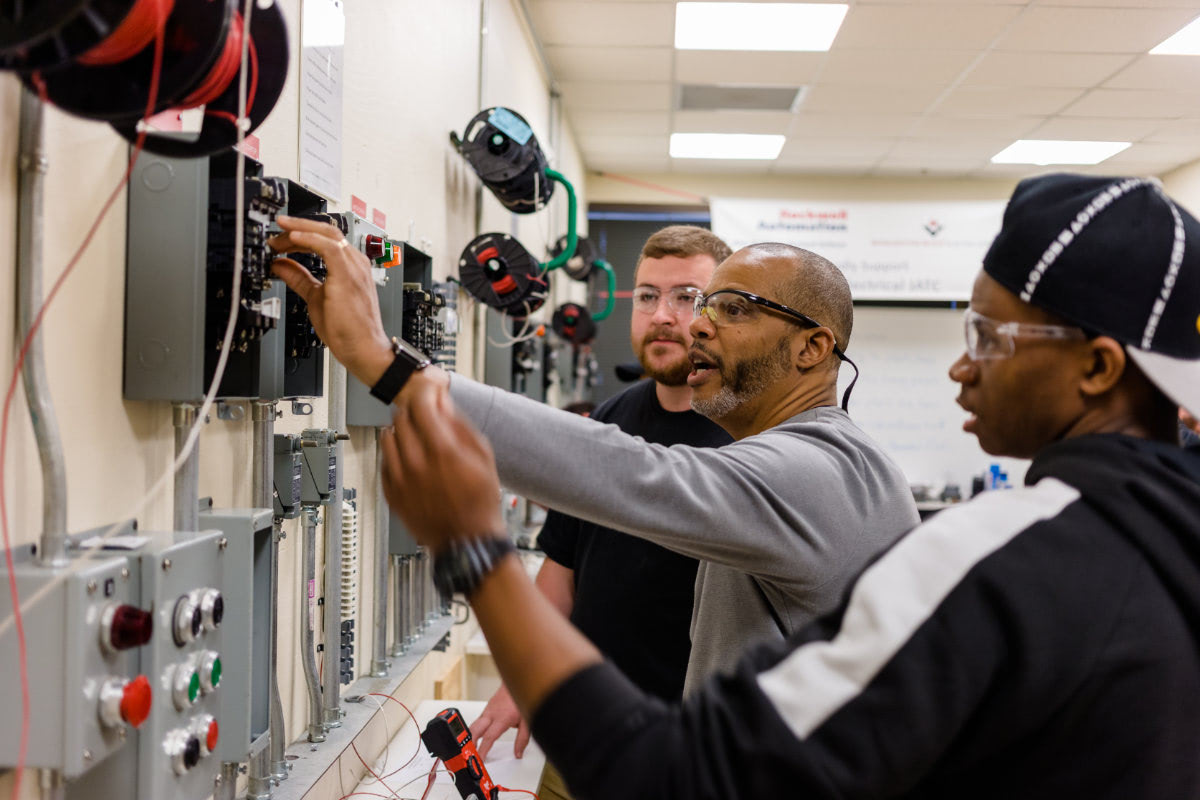A Registered Apprenticeship Program (RAP) is a proven model of apprenticeship that has been validated by the U.S. Department of Labor or a State Apprenticeship Agency. It combines On-the-Job Training, Related Technical Instruction, and a Progressive Wage schedule to create an earn-while-you learn program that results in a full-time, high-paying job upon completion.
What makes it a Registered Apprenticeship?
In the United States, there is a formal system in place that handles Registered Apprenticeships which are overseen by the Department of Labor. This process involves allowing companies to register their programs with the Office of Apprenticeship, if companies complete this task the government can then issue a certificate to workers at the company who complete an apprenticeship. For many years the term apprenticeship has been attached to the scope of blue-collar jobs we associate with the working trades such as carpentry, welding, woodwork, and other technical skills yet the landscape for this kind of program is vastly changing.
Modern apprenticeships offer three very distinctive aspects that make them attractive: on-the-job learning, related technical instruction, and a progressive wage schedule allowing for growth within the company from the very start. The Department of Labor defines an apprenticeship as an “innovative training program that allows employers to develop and prepare their future workforce while providing individuals with an learn-while-you-earn approach to career development” and has also split each kind into three different categories.
The Three Apprenticeship Categories
The first category is time-based apprenticeships. These kinds of apprenticeships track the apprentices' progress by how many hours they complete both in the classroom as well as with on-the-job training.
The second category is competency-based apprenticeships. These apprenticeships allow progress to be tracked by how well they can apply their abilities and knowledge to the actual work.
The third and final type of apprenticeship is the Hybrid apprenticeship. This apprenticeship looks at both the number of hours completed in the program as well as the application of those skills in the workplace.
Though these apprenticeship styles may differ from each other they all in some way or form include three distinctive qualities. These include,
- On-the-Job Learning
- Related Technical Instruction
- A Progressive Wage Schedule
On-the-job learning creates a productive learning work environment that helps apprenticeship participants get work experience while also studying towards receiving a certificate.
Related technical instruction provides apprentices a way to get relevant knowledge of their skill in a classroom setting often emulating a traditional schooling setting that can in many cases count towards college credit.
A progressive wage schedule allows employers to adjust an apprentice’s compensation as they progress through their training. As they continue to learn more and hone their skills their wages, in turn, will increase to meet their current abilities.
What are some benefits of completing an apprenticeship?
Apprenticeships include many positive benefits for both the apprentice and the employer. Some of the most beneficial perks for the apprentice include the fact that one can earn a living wage while simultaneously receiving an education. This in turn leads to another great benefit of apprenticeships which is the absence of college debt. People who attempt to complete an apprenticeship won’t pay any tuition fees as well as the fact that your employer will be paying you to complete your qualifications. This also provides an alternative education option for people who do not necessarily have the luxury of being able to afford a traditional college an alternative path that compensates you while also in many cases offering college credit in the classroom.
Another great advantage that apprenticeships provide is the on-the-job training aspect that gives participants relevant real-world experience. Getting hands-on work experience with the job allows workers to learn skills in a structured environment including a classroom education aspect combining in-person learning. This in-person learning style is extremely valuable and often overlooked as the mentorship facet of the program gives participants a direct line of person-to-person instruction from experienced workers within the field creating a learning environment that gives you real-life experience from professionals.
As an apprentice progresses in turn so does their wage. This is labeled as a “progressive wage schedule” that allows for an apprentice’s compensation to increase as they become more competent in their training. Towards the end and possibly the most valuable factor to the apprentice after they have completed their program and met their qualifications is the prospect of employment. After an apprenticeship is completed, employers may want to hire an apprentice full-time at the company if they have shown promise and excitement for the role.
What are some benefits of apprenticeships for employers?
For employers, there are many reasons that an apprenticeship can be beneficial for your company one being that apprenticeships help to diversify a company’s workforce by building a collective of skilled workers. A study performed by the Center for American Progress estimates that the average age of an advanced manufacturing worker is 56. Apprenticeship programs can help to fill “skilled worker” voids that many companies find challenging to place while also continuing to bring in new talent. As companies bring in this new talent, they can sculpt their programs to meet specific standards that a traditional college graduate may not meet without having completed the specific apprenticeship program.
An important factor in almost every company’s hiring process is retention rates and being able to keep promising talent in-house though many companies have found that apprenticeship programs actually increase loyalty within their participants with many staying with their original company due to the belief in their initial investment. It is also seen that apprenticeships within companies raise productivity and worker morale throughout their team which many credits to the benefits of a learning work environment.
A return on investment is something companies are always looking for and apprenticeships are a proven path to significant returns. According to Sarah Ayres Steinberg and Ben Schwartz from the Center for American Progress “Companies in countries with more expansive apprenticeship systems have been found to make a positive return on their investment in apprenticeship. In England, an apprenticeship is estimated to raise an employer’s economic output by £214—about $366—per week. A Swiss study found that employers in their country earn a net $300 million each year from the work apprentices do while training on the job. And in Canada, a 2009 study showed that for every $1 invested in apprenticeship programs, Canadian employers of all sizes and in every province can expect to receive $1.47 in return”. Given the high return numbers, there is no reason that the U.S can’t follow and emulate a similar growth and return rate.
Why do we need to continue expanding apprenticeship programs?
Apprenticeships remain a vital aspect of the American workforce because they create a path to more middle- and working-class jobs without the completion of a 4-year college degree. With the ever-increasing college tuition in today’s society finding alternative ways into the workforce with the possibility of a well-paying job is growing more and more important.
We can also see a significant decrease in employee turnover in companies that make use of apprenticeship programs. Apprenticeships not only help to reduce the number of employees coming through the revolving door but also can be used to address any unexpected worker shortages or vacancies that are usually difficult to fill.
These many positive factors have U.S employers highly recommending apprenticeship programs across the country. A recent study conducted on registered apprenticeship sponsors found that 87% of these sponsors would recommend registered apprenticeships while another 11% would recommend pending a few changes to national guidelines. Expanding the apprenticeship program within the United States would benefit a plethora of different people improving both the American workforce as well as the global economy.






.png)

